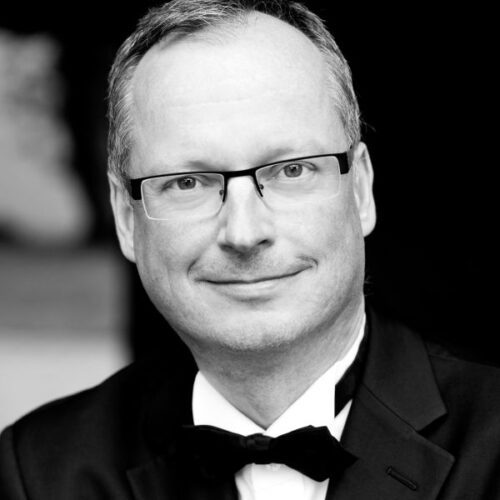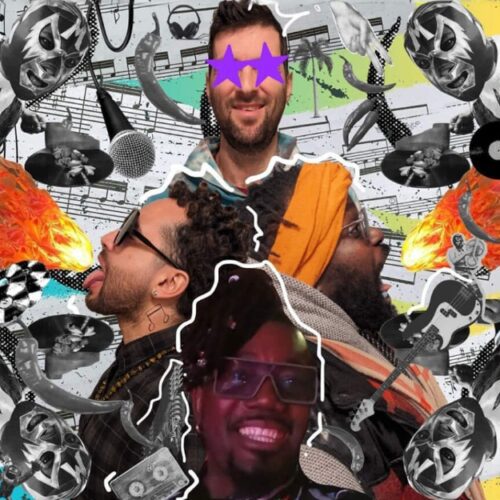Additional Information
Photo: Luke Orlando
After the acclaimed EP No. 1 and months of touring, Pottery has gone from a somewhat loose band to a much more tight knit and precise unit, while remaining as capricious as ever. All the concerts the Montreal quintet have performed really made a big difference, on stage on one hand, and then in terms of compositions on the other. This great leap forward can be noticed on the band’s first full-length album, Welcome To Bobby’s Motel, released a few days ago. Over 11 (generally) groovy tracks, Paul Jacobs, Austin Boylan, Tom Gould, Peter Baylis, and Jacob Shepansky touch on funk, dance-punk, psychedelia, and post-punk, sometimes in a casual way but very often out loud, reminding us here of David Byrne and Talking Heads, there Television, sometimes XTC or Parquet Courts. Welcome to Bobby’s Motel is a bristling record, where percussion has a preponderant place. An often raucous and wild album, very much in the image of the Montreal quintet. The guitarist and sometimes singer of the band Jacob Shepansky met with us to talk about the creation of the album, its production in the company of the renowned producer Jonathan Schenke (Bodega, Public Practice and Parquet Courts, among others)… and Bobby and his motel!
PAN M 360: What are the differences, if any, between EP No. 1 and Welcome To Bobby’s Motel?
Jacob Shepansky: The difference is just that they were timestamps of two periods of us as a band. We recorded No. 1 in 2016, I believe. We were a very new band, very hungry. And we were also figuring everything out as we were going and then, by the time we made Welcome To Bobby’s Motel, we had been touring a little bit more, and I think the touring affected the record a lot in that way that we were kind of able to test some of the songs that we’d written for Bobby’s Motel. We were able to play it to crowds every night and see if people moved to it, to judge their reactions and then kind of gauge what had a better response with the audience.
PAN M 360: Do You think that the new album might be more playful than the first EP?
JP: Yeah, I’d say so! Because we recorded it in 10 days, whereas No1 was recorded in two. So we didn’t have much time to experiment on the first one, while on this one, we definitely let our freak flag fly. Spent more time poking around and experimenting.
PAN M 360: With songs like “Texas Drums Pt I II”, it seems there are more drums on the new album.
JP: Oh yes, because when we did the first record Paul (Jacobs) didn’t have enough time to do all drums he wanted to. He’s a very good drummer. He grew up playing death metal and stuff like that so yeah, he’s got a good base.
PAN M 360: Although there’s a lot of groovy stuff on the album, there are also different vibes, softer songs like “Reflection” or “Hot Like Jungle”.
JP: Those we kind of forced ourselves to write, because we didn’t want to have a record of all the same vibe, we also wanted darker and slower stuff.
PAN M 360 : How was Welcome To Bobby’s Motel conceived? And who is Bobby. and where is that motel?
JP: Well, I guess it was us trying to contextualize what we had made, we were trying to put a figure on these songs. We just fell in love with this picture of Austin and Paul’s Face Swap, and that’s what Bobby is. So we kept looking at the picture and thought it was the funniest thing ever and when we were working on an album cover, we kept coming back to that picture. It’s like Bobby is the mascot of all the songs. I don’t remember who named it Bobby, though… Maybe it was Paul because he often likes to spit out names. But I’d say the album was born out of that crazy night we spent in a cheap motel in California, all in the same crappy room with nothing to eat but raw hot-dog sausages. That affected the music a lot. Originally, we had this big plan to go hang out in the woods and then cook our meal over a campfire and drop acid, but that didn’t work out so we ended up at that cheap motel. It would have been a bad night but we managed to have a great time. We hung up by the highway, under these wires and just walked around, did drugs… it was great! So that’s where a part of the concept of Bobby’s Motel came up. This motel we were at is the closest thing to what Bobby’s Motel could be.

PAN M 360: Why did you choose to work with Jonathan Schenke?
JP: I was looking through my records, and looking at who produced the records I like, and I saw that Parquet Courts’ Light Up Gold was produced by Jonathan Schenke, and thought I should check him out. And then I realized he produced a lot of interesting stuff. We had a call with him, then our manager went to meet him in New York and he was just a sweet, sweet guy. And that’s the kind of producer we wanted with us in the studio, a nice guy but a driving force we could get along with. We understood each other from day one. He understood where we were coming from, and I think we understood his intentions with all of it. There’s a fair amount of his input on the album, like some subtleties of production, but he was mostly just very good a pushing us to get our best take, or when we were going down too deep in a rabbit hole, trying to do a specific thing on a song, he would tell us to forget it and move on, keep the ball rolling. So he had a big impact there, and taught us a lot about microphone placement as well. He was everywhere. We recorded the album here in Montreal, at Breakglass studios.
PAN M 360: What did you want to achieve with Welcome To Bobby’s Motel, was there a plan or something?
JP: Hmm… No. We had these songs and we wanted to give them to the listeners. You know, when you put a song out, it’s not yours anymore. So that’s essentially all we wanted. Just give these songs away so we could keep on working. We didn’t want to be precious with these songs, just record them and get them out, just like we will do with the record we’re currently working on. We’re just trying to do the same thing, which is to create a record that encompasses a certain time in our lives.
























